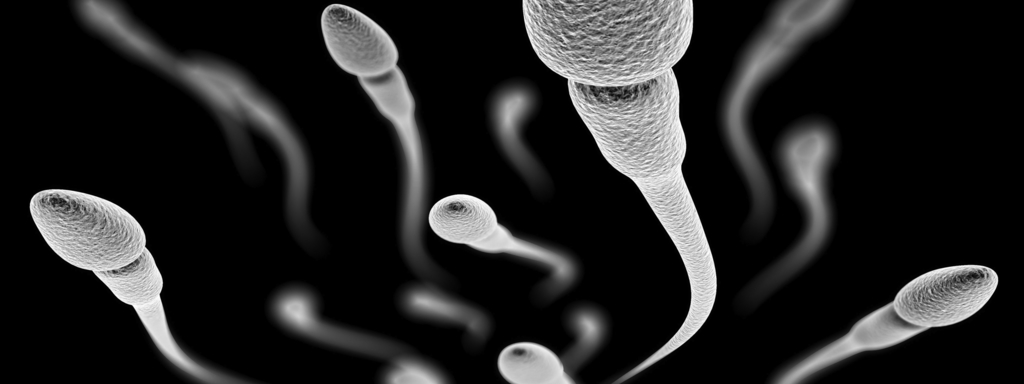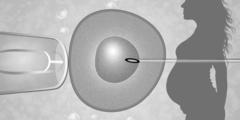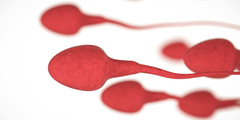
Endocriene hormoonverstoorders zijn controversieel omdat ze als oorzaak van de dalende vruchtbaarheid aangehaald worden. Onderzoek toont ons inderdaad een groot aantal onrustwekkende bevindingen. Toch is het geen uitgemaakte zaak. Dit artikel gaat in op de argumenten pro schadelijk effect van hormoonverstoorders en waarom de zaak nog niet beklonken is.
Beste bezoeker, u heeft geen toegang.
Enkel (web)abonnees hebben toegang tot tijdschriftartikelen. Het webabonnement is nog in de maak.
U kunt zich wel alvast (gratis) registreren en tal van andere webartikelen raadplegen!
Auteur
Trefwoorden:
Verschenen in
Referenties
Carlsen E, Giwercman A et al. Evidence for decreasing quality of semen during past 50 years. BMJ. 1992 Sep 12; 305(6854): 609–613.
Sengupta P, Dutta S, Krajewska-Kulak E. The disappearing sperms: analysis of reports published between 1980 and 2015. Am J Mens Health. 2017 Jul; 11(4): 1279–1304
Rolland M, Le Moal J et al. Decline in semen concentration and morphology in a sample of 26,609 men close to general population between 1989 and 2005 in France. Hum Reprod. 2013 Feb;28(2):462-70
Gabrielsen JS, Tanrikut C. Chronic exposures and male fertility: the impacts of environment, diet, and drug use on spermatogenesis. Andrology. 2016 Jul;4(4):648-61
Bliatka D, Lymperi S et al. Effect of endocrine disruptors on male reproduction in humans: why the evidence is still lacking? Andrology. 2017 May;5(3):404-407
Martino-Andrade AJ, Chahoud I. Reproductive toxicity of phthalate esters. Mol Nutr Food Res. 2010 Jan;54(1):148-57
Wang A, Padula A et al. Environmental influences on reproductive health: the importance of chemical exposures. Fertil Steril. 2016 Sep 15;106(4):905-29
Sifakis S, Androutsopoulos VP et al. Human exposure to endocrine disrupting chemicals: effects on the male and female reproductive systems. Environ Toxicol Pharmacol. 2017 Apr;51:56-70
Testai E, Galli CL et al. A plea for risk assessment of endocrine disrupting chemicals. Toxicology. 2013 Dec 6;314(1):51-9
Sweeney MF, Hasan N et al. Environmental endocrine disruptors: Effects on the human male reproductive system. Rev Endocr Metab Disord (2015) 16:341–357
Nohynek GJ, Borgert CJ et al. Endocrine disruption: fact or urban legend? Toxicol Lett. 2013 Dec 16;223(3):295-305
Levine H, Jørgensen N, Martino-Andrade A et al. Temporal trends in sperm count: a systematic review and meta-regression analysis. Hum Reprod Update. 2017 Nov 1;23(6):646-659
Jones S, Boisvert A et al. Disruption of rat testis development following combined in utero exposure to the phytoestrogen genistein and antiandrogenic plasticizer di-(2-ethylhexyl) phthalate. Biol Reprod. 2014 Sep;91(3):64
Ejaredar M, Nyanza EC et al. Phthalate exposure and childrens neurodevelopment: A systematic review. Environ Res. 2015 Oct;142:51-60
Rochester JR. Bisphenol A and human health: a review of the literature. Reprod Toxicol. 2013 Dec;42:132-55
Touillaud MS, Pillow PC et al. Effect of dietary intake of phytoestrogens on estrogen receptor status in premenopausal women with breast cancer. Nutr Cancer. 2005;51(2):162-9
Sharpe RM. Environmental/lifestyle effects on spermatogenesis. Phil Trans R Soc B. 2010; 365:1697–1712
Schug TT, Johnson AF et al. Minireview: Endocrine disruptors: past lessons and future directions. Mol Endocrinol. 2016 Aug;30(8):833-47
Orton F, Tyler CR. Do hormone-modulating chemicals impact on reproduction and development of wild amphibians? Biol Rev Camb Philos Soc. 2015 Nov;90(4):1100-17
Aulerich RJ, Ringer RK. Current status of PCB toxicity to mink, and effect on their reproduction. Arch Environ Contam Toxicol. 1977;6(2-3):279-92
Jobling S, Beresford N et al. Altered sexual maturation and gamete production in wild roach (Rutilus rutilus) living in rivers that receive treated sewage effluents. Biol Reprod. 2002 Feb;66(2):272-81
Bonde JP, Flachs EM et al. The epidemiologic evidence linking prenatal and postnatal exposure to endocrine disrupting chemicals with male reproductive disorders: a systematic review and meta-analysis. Hum Reprod Update. 2016 Dec;23(1):104-125
Paoli D, Giannandrea F et al. Exposure to polychlorinated biphenyls and hexachlorobenzene, semen quality and testicular cancer risk. J Endocrinol Invest. 2015 Jul;38(7):745-52
Lifeng T, Shoulin W et al. Effects of fenvalerate exposure on semen quality among occupational workers. Contraception. 2006 Jan;73(1):92-6
Yucra S, Rubio J et al. Semen quality and reproductive sex hormone levels in Peruvian pesticide sprayers. Int J Occup Environ Health. 2006 Oct-Dec;12(4):355-61.
Li DK, Zhou Z et al. Urine bisphenol-A (BPA) level in relation to semen quality. Fertil Steril. 2011 Feb;95(2):625-30.e1-4
Petersen MS, Halling J et al. Spermatogenic capacity in fertile men with elevated exposure to polychlorinated biphenyls. Environ Res. 2015 Apr;138:345-51
Sansone A, Di Dato C, de Angelis C et al. Smoke, alcohol and drug addiction and male fertility. Reprod Biol Endocrinol. 2018 Jan 15;16(1):3
R. M. Sharpe Review. Environment and spermatogenesis 17
Priskorn L, Jensen TK et al. Is sedentary lifestyle associated with testicular function? A cross-sectional study of 1,210 men. Am J Epidemiol. 2016 Aug 15;184(4):284-94
Lyu Z, Feng X et al. Human papillomavirus in semen and the risk for male infertility: a systematic review and meta-analysis. BMC Infect Dis. 2017 Nov 9;17(1):714
Russart KLG, Nelson RJ. Light at night as an environmental endocrine disruptor. Physiol Behav. 2017 Sep 6. pii: S0031-9384(17)30274-3
Travison TG, Araujo AB, O’Donnell AB, Kupelian V, McKinlay JB. A population-level decline in serum testosterone levels in American men. Journal of Clinical Endocrinology and Metabolism. 2007;92(1):196–202
Samplaski MK, Nangia AK. Adverse effects of common medications on male fertility. Nat Rev Urol. 2015 Jul;12(7):401-13
Rochester JR. Bisphenol A and human health: a review of the literature. Reprod Toxicol. 2013 Dec;42:132-55





